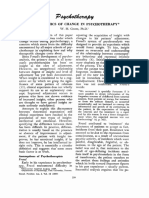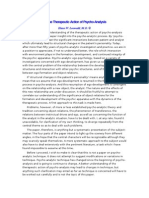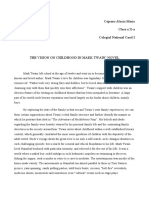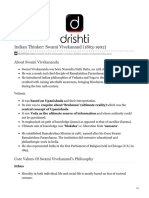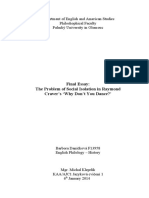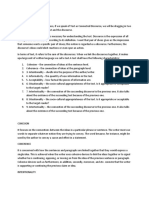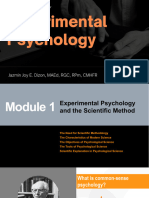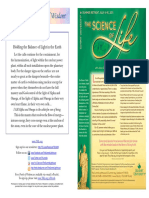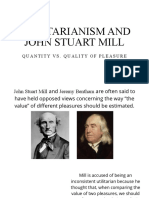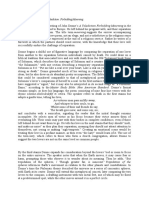0% found this document useful (0 votes)
29 views10 pagesA Note On Notes
This article discusses the practice of note taking during psychoanalytic sessions. While Freud advised against it, the author argues it should not be viewed as a universal prohibition. For some analysts and patients, note taking can aid the analytic process rather than hinder it. The author found that for severely withdrawn patients with little affect tolerance, note taking helped him maintain his analytic capacities when he otherwise felt overwhelmed by the patient's projections. Note taking served as a centering device that protected his ability to think and analyze during difficult moments with these patients.
Uploaded by
mihika971Copyright
© © All Rights Reserved
We take content rights seriously. If you suspect this is your content, claim it here.
Available Formats
Download as PDF, TXT or read online on Scribd
0% found this document useful (0 votes)
29 views10 pagesA Note On Notes
This article discusses the practice of note taking during psychoanalytic sessions. While Freud advised against it, the author argues it should not be viewed as a universal prohibition. For some analysts and patients, note taking can aid the analytic process rather than hinder it. The author found that for severely withdrawn patients with little affect tolerance, note taking helped him maintain his analytic capacities when he otherwise felt overwhelmed by the patient's projections. Note taking served as a centering device that protected his ability to think and analyze during difficult moments with these patients.
Uploaded by
mihika971Copyright
© © All Rights Reserved
We take content rights seriously. If you suspect this is your content, claim it here.
Available Formats
Download as PDF, TXT or read online on Scribd
/ 10



























